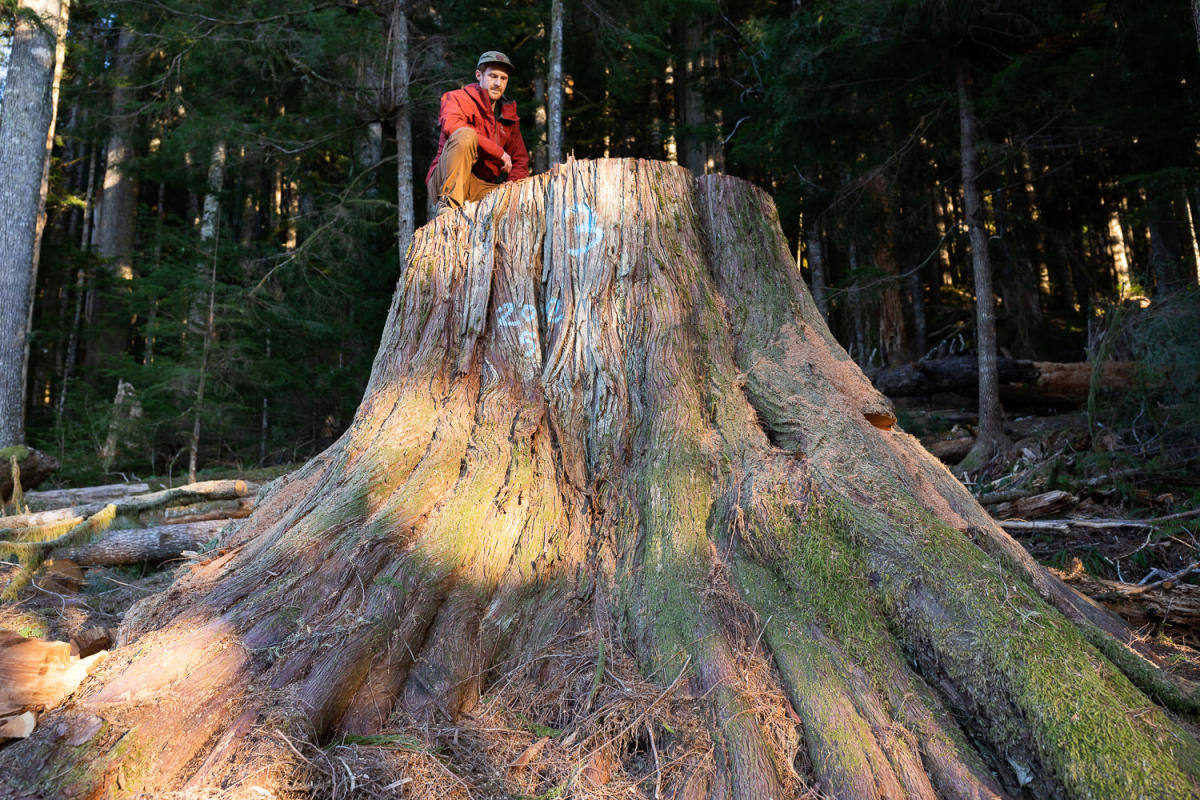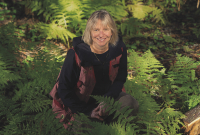Support strong Canadian climate journalism for 2025
Environmentalists struggling to save diminishing ancient forests on Canada’s West Coast are hopeful after B.C. announced a new old-growth advisory panel staffed by respected foresters and scientists.
“The technical panel is a very welcome positive step forward,” said Andrea Inness of the Ancient Forest Alliance.
“It really gives me a glimmer of hope the province is going to listen to science around the state of old-growth forests.”
The new technical panel will ensure the province is using the best science and data available to identify at-risk old-growth ecosystems and prioritize the areas slated for old-growth logging deferrals, said B.C. Minister of Forests Katrine Conroy on Thursday.
“We are committed to a science-based approach to old-growth management, and our work with the advisory panel will help us break down barriers between the different interpretations of data that are out there,” Conroy said in a press statement.
The panel includes ecologists Rachel Holt and Karen Price, forest policy expert and environmental economist Lisa Matthaus, and foresters Garry Merkel and Dave Daust.
The appointments come as the NDP government is facing mounting public pressure, both at home and abroad, to make good on its promise to protect the most at-risk tracts of B.C.’s iconic ancient forests. Protests calling for action have been occurring across the province, and hundreds of activists have been arrested at old-growth blockades in the Fairy Creek watershed on southwest Vancouver Island in Premier John Horgan’s riding.
The choice of panellists suggests the province is finally acknowledging the data and science behind the independent Last Stand report written by Holt, Price and Daust that indicates the dire state of at-risk forest ecosystems in B.C., Inness said.
The report, often cited by environmental groups (ENGOs), suggests that only three per cent of B.C.’s remaining old forests support massive ancient trees.
“To date, we have not seen or heard the province accept those scientific findings or embrace and make decisions based on them,” Inness said.
The inclusion of Merkel — an author of the old-growth strategic review that includes 14 recommendations the province has committed to implement to shift forestry away from a focus on timber extraction to prioritizing biodiversity — is also a positive sign, she added.
“I hope this signals a turning point in the province’s approach to implementing the old-growth (review) recommendations,” she said.
“And that the province understands we can’t get anywhere if we don’t see eye-to-eye on the crisis at hand and the state of old-growth forests.”
The province has come under fire by ENGOs, which suggest it has grossly exaggerated the amount of at-risk old-growth it protected through logging deferrals in nine areas across the province made in September.
Inness hopes the panel’s input will rectify the government’s claim it has protected 200,000 hectares of old-growth.
“I still have concerns, because we continue to see the province use misleading figures around the state of old-growth forests and what they’ve done so far,” Inness said.
“You know much of that forest is not what the average British Columbia would consider old-growth. It is low-productivity forest with smaller trees, and much of that area is already protected.”
The panel will be providing advice around high-priority areas for deferrals, but won’t be making any decisions, which will result from government-to-government discussions with Indigenous nations, Conroy said at a press conference Thursday.

In addition to identifying high-priority at-risk areas for deferral, the panel will help develop a common understanding of the broader issues around at-risk forest ecosystems, Holt told Canada’s National Observer.
“We’re hoping along the way we can increase the understanding and transparency of information around the issues of old-growth forests in the province,” Holt said.
There has been a lot of different or competing data presented from various stakeholders around old-growth forests, and it’s resulting in public mistrust, she said, noting the old-growth review called for better public information on at-risk forests.
“We’re hoping the panel can clear up a lot of that miscommunication, and really help the public, so everyone has a baseline understanding of the state of old-growth in the province,” Holt said.
“What really is and isn’t at risk. How much there is. You know, all these questions there’s been a lot of conversation about over the last couple of years.”
However, Conroy would not clarify when or if the panel’s information around the priority deferral areas would become public, saying, eventually some information would be released.
“The advice will be confidential, but it'll help us to inform those really important government-to-government discussions on future deferrals,” Conroy said, adding more deferrals are expected this summer.
Jens Wieting of Sierra Club BC said he hoped the panel appointment signalled the province would no longer delay action around the promised paradigm shift in forest stewardship.
Interim old-growth deferrals are vital to ensure the most at-risk forests aren’t being logged as discussions with First Nations occur, Wieting said.
“But I’d like to repeat how important it is that the government act quickly, and announce funding with the explicit purpose to increase protections, and give First Nations and communities some hope they’ll be supported through this transition,” he said.
Holt also hopes the panel’s work will mark a shift in forestry policy in the province.
“The government taking the step of putting this group together really helps us move along that track,” she said, adding little progress has been made to date.
“I want to be optimistic that this is the beginning of the paradigm shift. And time will tell us if that is correct.”
Rochelle Baker / Local Journalism Initiative / Canada’s National Observer






Comments
Thanks for tracking the story.
A couple of observations on language.
"The new technical panel will ensure the province is using the best science and data available to identify at-risk old-growth ecosystems and prioritize the areas slated for old-growth logging deferrals, said B.C. Minister of Forests Katrine Conroy on Thursday."
This could equally be seen as yet another kick of the can down the road while something else is studied. Is the cutting continuing unabated during this period of study? Once the studying is concluded, will the logging of old-growth end or is the government just seeking justification, ultimately, to continue business as usual but with a different ordering of which trees are cut first?
Is not all remaining old-growth at-risk???
Has anyone done the math on the sheer volume of tons of CO2 filtering these ancient trees have done? These trees have far greater value to human kind than wood and beauty. The unseen gift is cleaner air. A million dollar Carbon Tax tax should be put on every old growth tree that gets cut down period. The money goes directly into cleaning up Canada’s pollution and saving our wildlife. If I was running the advisory panel, that’d be my first suggestion. BC cleans the air, we leave our trees alone and get huge Carbon Credits from the Feds. Possibly the conservatives can save our Canada, Justin Trudeau doesn’t seem to be listening to Canada’s ancient trees.
I go for a greener - cleaner Canada, what say you?
GsDalsin